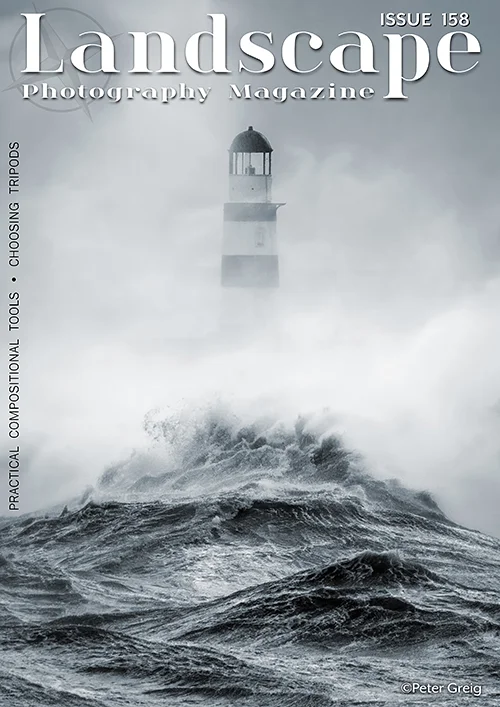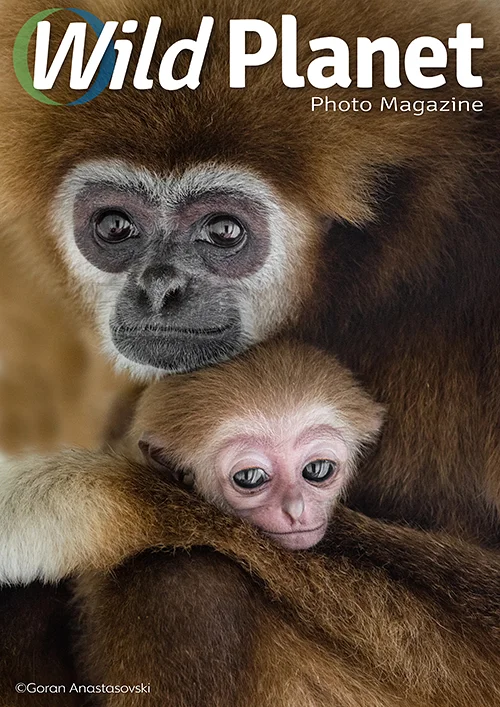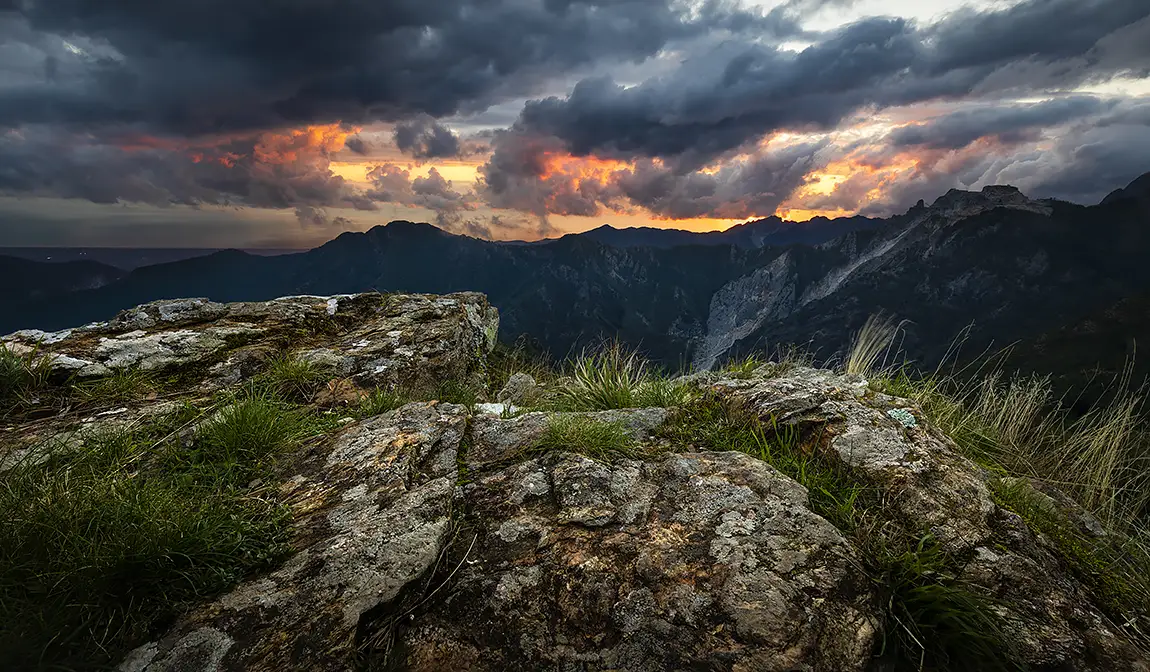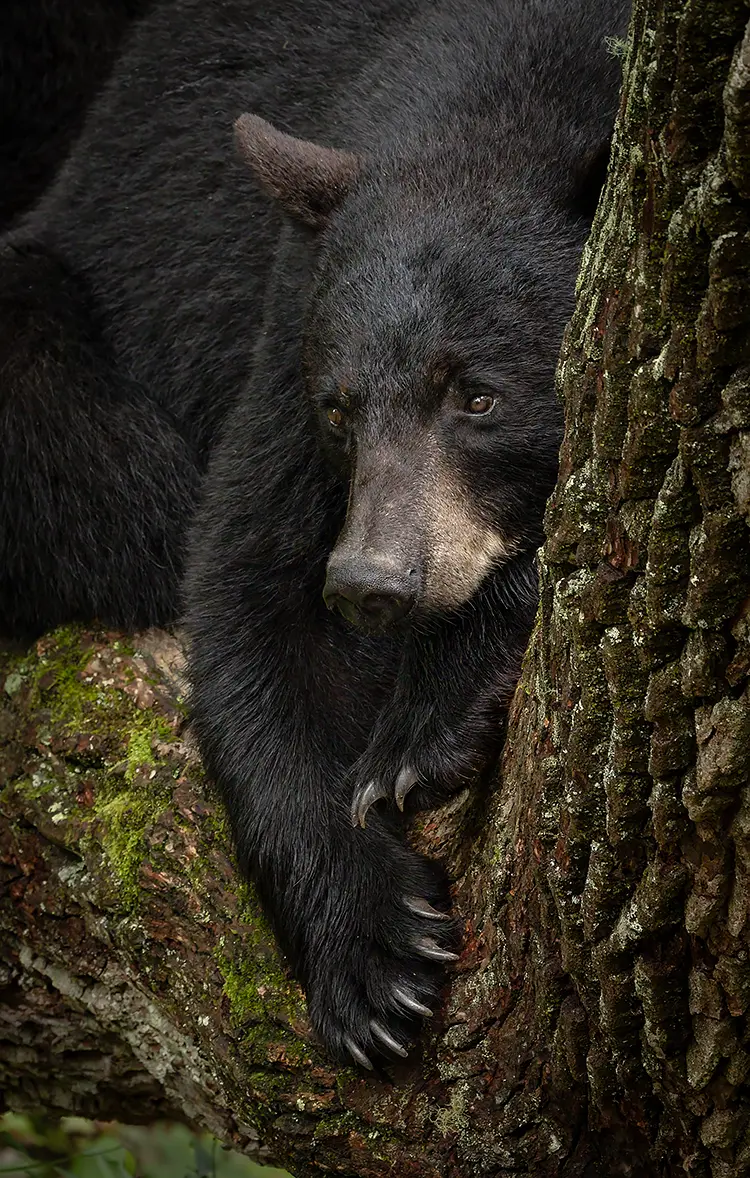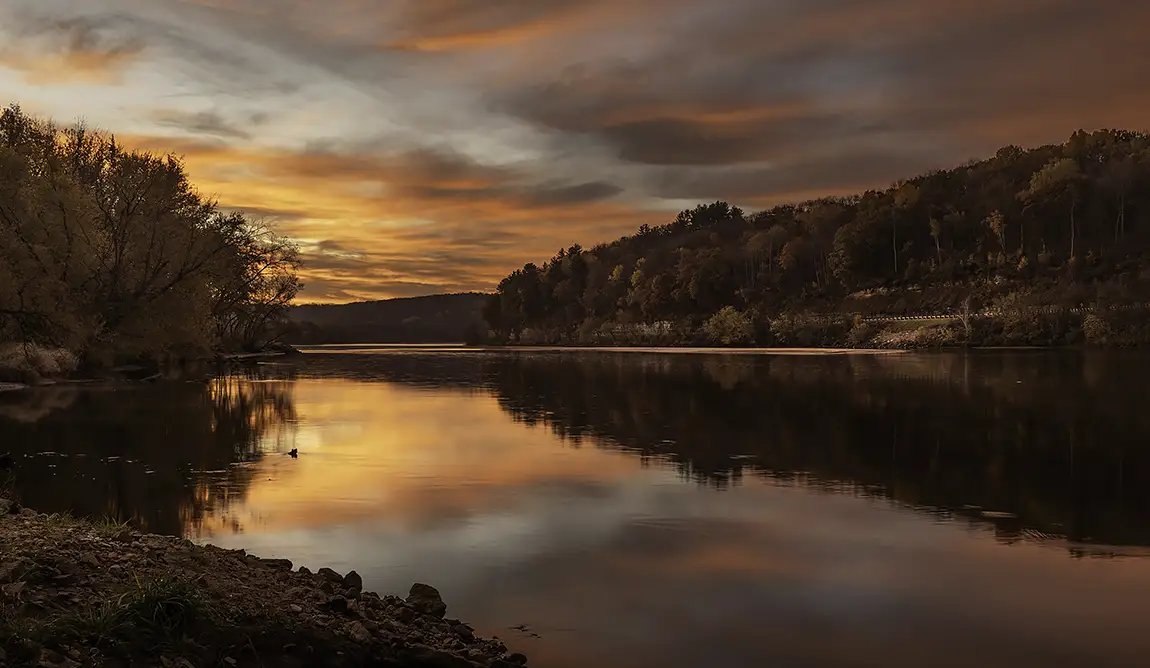I arrived at Passo Croce with a clear idea in mind: to photograph a rock arch, hoping the setting sun would pass through it. I had done my homework—checked the coordinates, planned the route, imagined the scene. In my head, it all appeared perfectly composed: the light pouring through the opening, the sky painted in gold, the wind brushing the grass in the foreground. Everything seemed to be in place—until reality reminded me that plans are merely starting points.
A single glance made me realise my mistake. The sun would never pass through that arch, not at sunset at least. The spot I had chosen lay in shadow while the light drifted elsewhere. At first, I deemed it a failure. But I didn’t turn back. In the mountains, mistakes often opened unexpected doors, and I wasn’t ready to close this one.
I retraced the trail. The grass had nearly swallowed it, and the stones were slick under my boots. Every sound was amplified—the hiss of the wind, the echo of my breath, the dry clatter of a rock tumbling down the slope. Just as I was about to head back to the car, something held me still. I remembered a faint trace I had noticed earlier, a narrow path climbing steeply along the ridge. I hesitated for a moment. The sky above was already glowing with the first signs of sunset. I decided to take the risk.
The climb was short but demanding. My legs burned, my breathing quickened, yet each step felt like a move toward something truer, more essential. When I reached the summit, the view opened up all at once. Before me, the Apuan Alps stretched in austere majesty—ridges and chasms drawn in light. The wind rushed over the peaks, bending the tall grass that clung to the rocks. The air smelled of rain and stone, carrying a hint of the distant sea.
The sky was in turmoil. Heavy clouds churned and collided, shifting and reshaping. Every second was different from the last. Then it happened: a narrow tear of light sliced through the gray, and the horizon ignited. Orange melted into deep red, and the sky seemed to burn from within. It felt as if the sunset had decided to reveal itself right there, right then—just when I had stopped expecting it.
I set up the camera quickly, but there was no rush inside me. I knew that what mattered wasn’t the precision of the aperture or the perfection of the frame—it was the breath of the moment itself. The rocks in the foreground became my anchor: rough, timeworn, alive. They led the eye toward the dark mountains that rose like a barrier, then yielded to the fire beyond. Beyond the clouds, the light refused to die.
When I pressed the shutter, I felt that I wasn’t simply recording an image. I was searching for balance—between weight and lightness, between effort and revelation. The climb, the sweat, the fleeting time—everything stilled in that instant.
I stayed long after the shot. The light faded slowly, and the clouds reclaimed the sky. Yet what I had seen remained, etched in memory. Beyond the clouds, there wasn’t just the sky. There was always the possibility of a light I hadn’t planned for. And perhaps that’s where true photography began—not in what we expected, but in what revealed itself when we finally stopped trying to control it.





